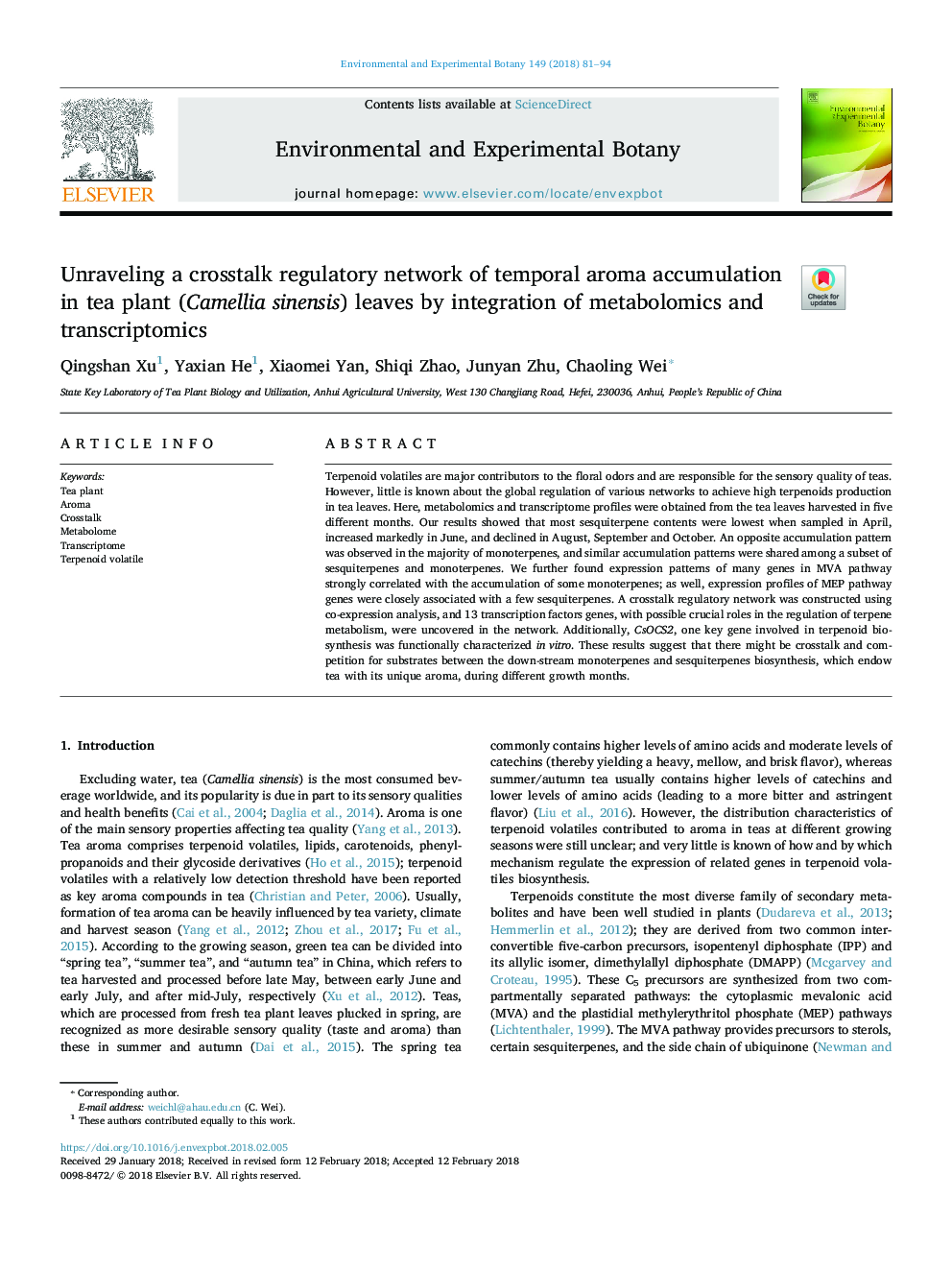| Article ID | Journal | Published Year | Pages | File Type |
|---|---|---|---|---|
| 8887061 | Environmental and Experimental Botany | 2018 | 14 Pages |
Abstract
Terpenoid volatiles are major contributors to the floral odors and are responsible for the sensory quality of teas. However, little is known about the global regulation of various networks to achieve high terpenoids production in tea leaves. Here, metabolomics and transcriptome profiles were obtained from the tea leaves harvested in five different months. Our results showed that most sesquiterpene contents were lowest when sampled in April, increased markedly in June, and declined in August, September and October. An opposite accumulation pattern was observed in the majority of monoterpenes, and similar accumulation patterns were shared among a subset of sesquiterpenes and monoterpenes. We further found expression patterns of many genes in MVA pathway strongly correlated with the accumulation of some monoterpenes; as well, expression profiles of MEP pathway genes were closely associated with a few sesquiterpenes. A crosstalk regulatory network was constructed using co-expression analysis, and 13 transcription factors genes, with possible crucial roles in the regulation of terpene metabolism, were uncovered in the network. Additionally, CsOCS2, one key gene involved in terpenoid biosynthesis was functionally characterized in vitro. These results suggest that there might be crosstalk and competition for substrates between the down-stream monoterpenes and sesquiterpenes biosynthesis, which endow tea with its unique aroma, during different growth months.
Related Topics
Life Sciences
Agricultural and Biological Sciences
Ecology, Evolution, Behavior and Systematics
Authors
Qingshan Xu, Yaxian He, Xiaomei Yan, Shiqi Zhao, Junyan Zhu, Chaoling Wei,
